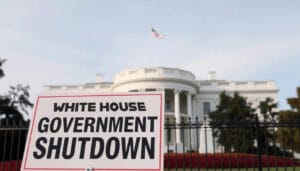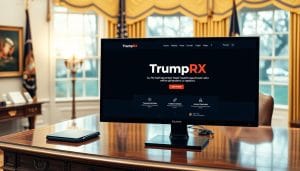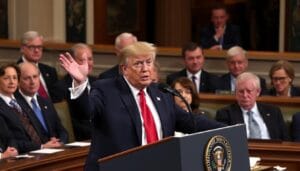Government Shutdown Stalemate Continues: No Solutions Ahead as Trump Speaks to Congress
As the Government Shutdown Stalemate Continues with No Solutions Ahead, the US braces for the impacts on services and economy.
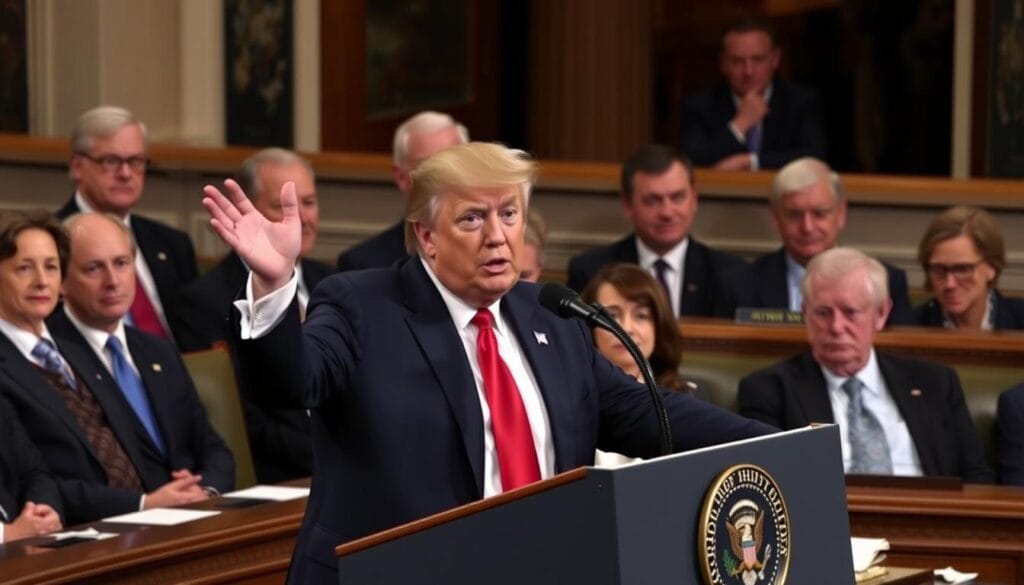
Government Shutdown Stalemate Continues: No Solutions Ahead
Government Shutdown Stalemate Continues: The standoff in Washington has reached a stalemate, with no end in sight. President Donald Trump’s plan was intended to be swift, but it has now entered its second week. Early polls show voters are divided, and Republicans are losing their expected advantage.
Democrats are gaining strength, sticking together, while GOP leaders are determined to wait it out. In the White House, advisors are considering layoffs, but allies warn it could harm them. The markets seem unaffected, and the public’s reaction is calm, reducing pressure to find a solution.
The looming expiration of ACA subsidies adds to the urgency. Senate Republicans have proposed a two-year extension with stricter rules. Senator Josh Hawley has warned of high premium hikes in Missouri. The White House is open to talks, but the Senate’s math is challenging, as detailed in this Senate stalemate report. With air travel delays and agency slowdowns at risk, time is running out, as seen in this shutdown deadline overview.
The Trump shutdown strategy has hit a wall. With no end in sight, both parties face growing costs, from service disruptions to political damage that could shape the year.
Government Shutdown Stalemate Key Takeaways
- Government Shutdown Stalemate with no solutions, as we enter week two.
- Stalemate deepens as the Washington standoff shows no solutions ahead, and public pressure stays muted.
- Early polling results blame the GOP and Trump, narrowing the room for a swift Republican win.
- Democrats’ unity increases Democratic leverage in the Congress funding fight.
- White House debates a federal layoffs threat, wary of backlash and long-term damage.
- The expiration of ACA subsidies raises the risk of premium spikes and forces healthcare to center stage.
- GOP leaders hold a hard line while signaling that talks on healthcare will only begin after the shutdown ends.
- Markets remain calm, reducing urgency even as service disruptions and costs accumulate.
Political Landscape and Public Opinion Amid the Ongoing Shutdown
The standoff is becoming increasingly prolonged, and the Trump administration’s shutdown plan is becoming less clear. A calm mood has settled over Washington. People are tired of the shutdown, and the market is not reacting strongly.
Within the GOP, there’s a significant debate on how to communicate effectively. Allies are looking at federal budget cuts as a way to get what they want.
Trump’s Strategy Faces Headwinds as the Standoff Drags On
Advisers thought a quick fight would win them something. But time has changed that. Now, the Trump plan is fraught with doubts and concerns.
There’s talk of laying off White House staff. However, leaders are uncertain about whether they should do it.
Some in the GOP want to reduce the size of agencies and reallocate funds. However, the messaging war is becoming increasingly crowded. Every move risks backlash.
Democrats’ Unified Position Strengthens Their Leverage
Democrats are standing strong, surprising Republicans. They’re not backing down, even as the shutdown goes on. They’re focusing on more than just health care.
Republicans are trying to attack, but Democrats are sticking to their message. They want basic funding and stability. This makes it hard for the GOP to change its message.
Early Polling Shows Voters Split on Blame
People are divided on who to blame, according to polls. A Washington Post poll shows 47% blame Trump/GOP. This makes it hard for the GOP to move forward.
Surveys have changed the story. They give talking points to both sides. This shapes where ads and surrogates go next.
Lower-Key Public Reaction and Market Numbness Shape the Narrative
The public is not reacting strongly to the shutdown. This is like the past times of gridlock. The market is also not moving much, showing little worry about the shutdown.
With people getting tired, there’s less urgency. This calm helps those who want to wait it out. The White House’s threat to lay off staff is kept in reserve to try to get things moving.
| Factor | Current Impact | Who Benefits | Near-Term Outlook |
|---|---|---|---|
| Polling Momentum | Washington Post poll 47% blame Trump/GOP versus Democrats | Democrats gain leverage | Continues to influence ad spend and surrogates |
| Messaging Strategies | Intense GOP messaging war versus Democratic unity on demands | Democrats on consistency; GOP on volume | Escalation expected into fall |
| Economic Signals | Muted market reaction to shutdown headlines | Incumbents favoring stability | Gradual risk re-pricing if duration grows |
| Public Sentiment | Voter fatigue and lower-key response | Whichever side avoids overreach | Pressure rises only with service disruptions |
| Leverage Tools | White House layoffs threat and talk of federal spending shifts | The executive branch if executed | High-stakes move with political risk |
Both sides are closely monitoring these signs. They’re keeping their options open. The next phase will depend on whether calm prevails or a trigger—like economic stress or service delays—changes the game.
Government Shutdown Stalemate Continues: No Solutions Ahead
Every hour, the stakes grow higher as agencies prepare for disruptions. Leaders are pointing fingers, and the latest shutdown updates show services stalled, jobs lost, and data delayed. This crisis affects paychecks, insurance, and loans nationwide.
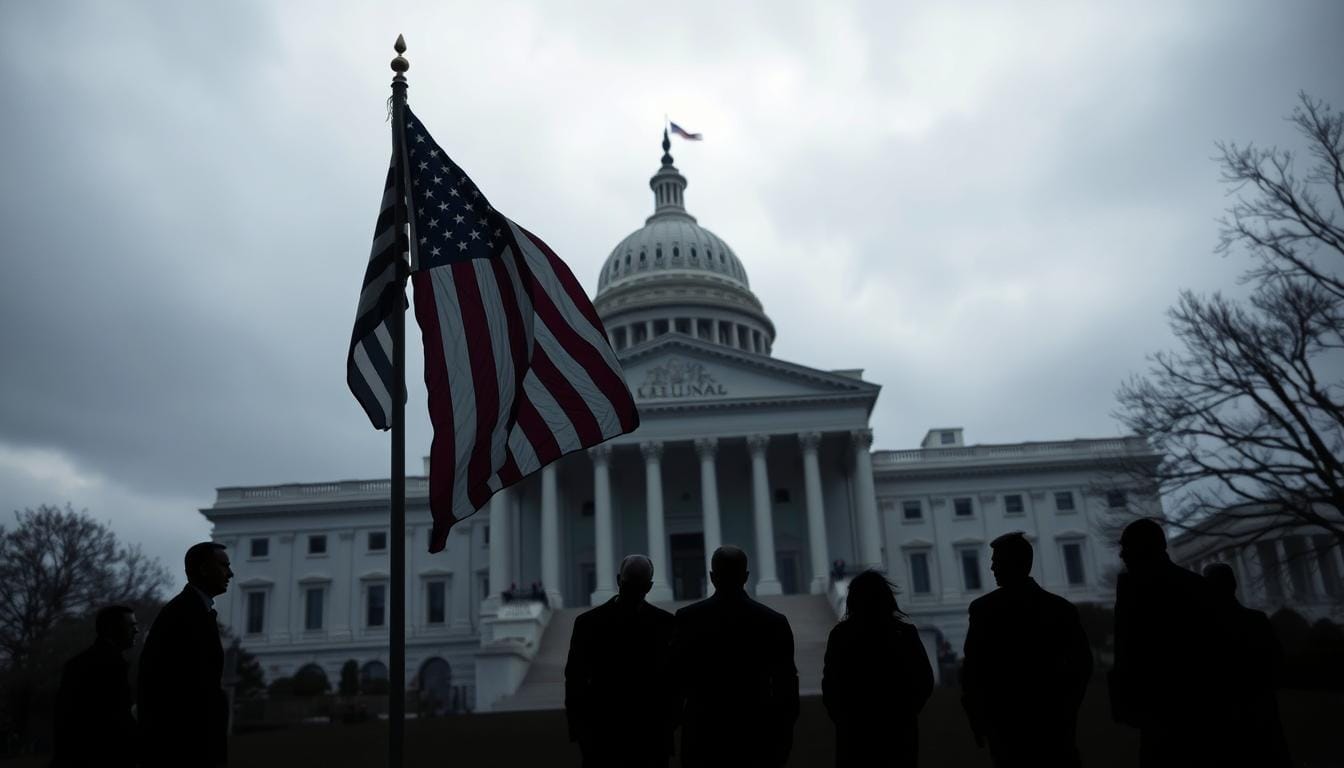
Escalation Risks: Threatened Layoffs and Political Backfire
Now, talk of cutting the federal workforce is a genuine concern. Agencies plan significant layoffs, a move that could force action but also risk political backlash. Experts say short-term pain might lead to long-term gains, but voters often remember when their pay and benefits are at risk.
Republicans say Democrats chose to play hardball, while Democrats blame Republicans for the squeeze. Without no-strings funding, finding relief is tough. Premium hikes and delayed payments are causing worry in key counties.
GOP Leaders’ Hard Line and Delayed Congressional Return
Leaders are showing no flexibility. The House GOP schedule keeps members away until the Senate moves, showing a firm stance. Advisors suggest downsizing agencies and shifting funds, testing patience back home.
Mike Johnson and Senate leaders seem united, but aides are quietly discussing damage control. John Thune’s team is monitoring pressure from constituents and making discreet calls about what a deal might require. Talks are slow, and time-sensitive programs are at risk.
Competing Messages Over Health Care and Immigration Funding
Both sides are focusing on different messages. Republicans argue that spending on undocumented immigrants is a bad priority. Democrats highlight pocketbook issues and basic services, focusing on uninterrupted coverage and steady benefits.
Advocacy groups highlight the differences, but finding a clear solution is hard without no-strings funding. As services are cut and families face premium hikes, the public gets mixed signals and sees rising costs, not progress.
ACA Subsidies at the Center: Costs, Coverage, and Electoral Stakes
The fight over Obamacare subsidies is critical. Democrats say losing these enhancements will lead to premium hikes for millions, affecting the electoral map. Republicans discuss a narrower plan to control costs.
Sen. Josh Hawley points out premium hikes in Missouri, adding pressure for a deal. Mike Johnson and John Thune acknowledge the impact but seek reforms first. The White House is ready for talks after reopening, but without progress, costs continue to rise.
Markets and households watch each update closely as core services wait. Even routine releases and help programs are delayed, as seen in the key jobs report outlook. Outside Washington, lenders, insurers, and schools prepare for the fallout if talks fail again.
Politics shifts to social media and headlines, while policy staff seek solutions. The noise grows, but finding a path remains tough. This explains why some conservatives push for add-ons and others urge caution, as discussed in recent conservative media coverage.
Government Shutdown Stalemate Conclusion
The shutdown outlook is grim due to a deepening partisan standoff. The White House and Republican leaders want concessions before talking. Democrats, on the other hand, are united and growing more confident.
Public opinion is divided, making it harder to find a quick solution. This split opinion affects how voters see each side. Despite this, the economy has not yet fully felt the impact.
The political risk is growing. Threats of layoffs and cuts could harm the White House if they happen. Senate votes show the deep gridlock, and stories like this Senate stalemate update highlight the focus on endurance over compromise.
ACA subsidies are now a key policy issue. Both sides recognize that significant premium hikes will harm millions. This could raise the stakes for elections.
Quiet talks suggest a possible reform-minded extension of subsidies. But any deal depends on ending the shutdown first. This keeps public opinion and voter sentiment in a constant state of flux.
Leaders are gearing up for a long campaign season. They are testing messages and preparing for a long fight. The next move may come when the risks of doing nothing outweigh the benefits of the current position.
For citizens, the standoff is not just a show. It’s a test of priorities, performance, and accountability. People are watching their paychecks, services, and timelines closely.



